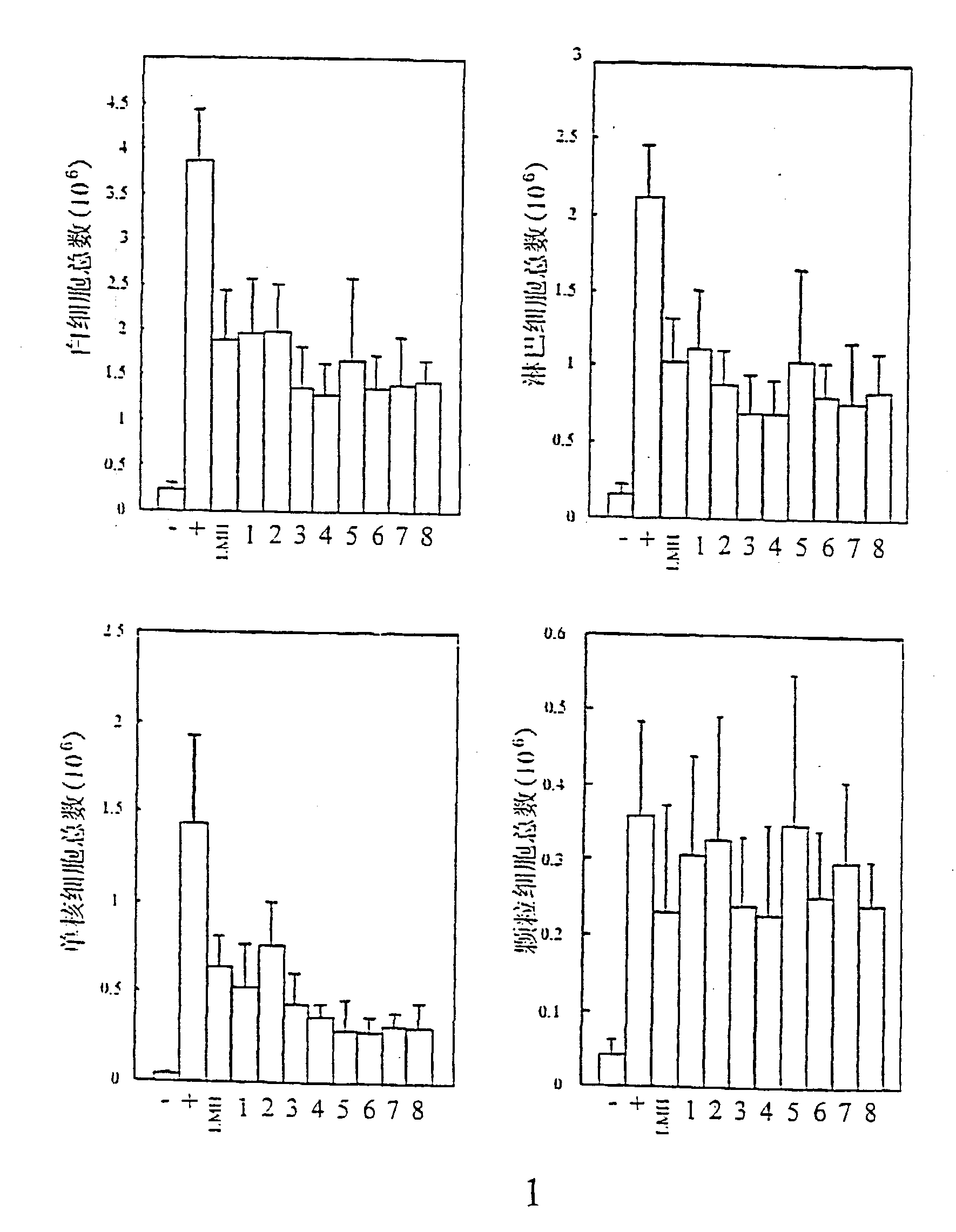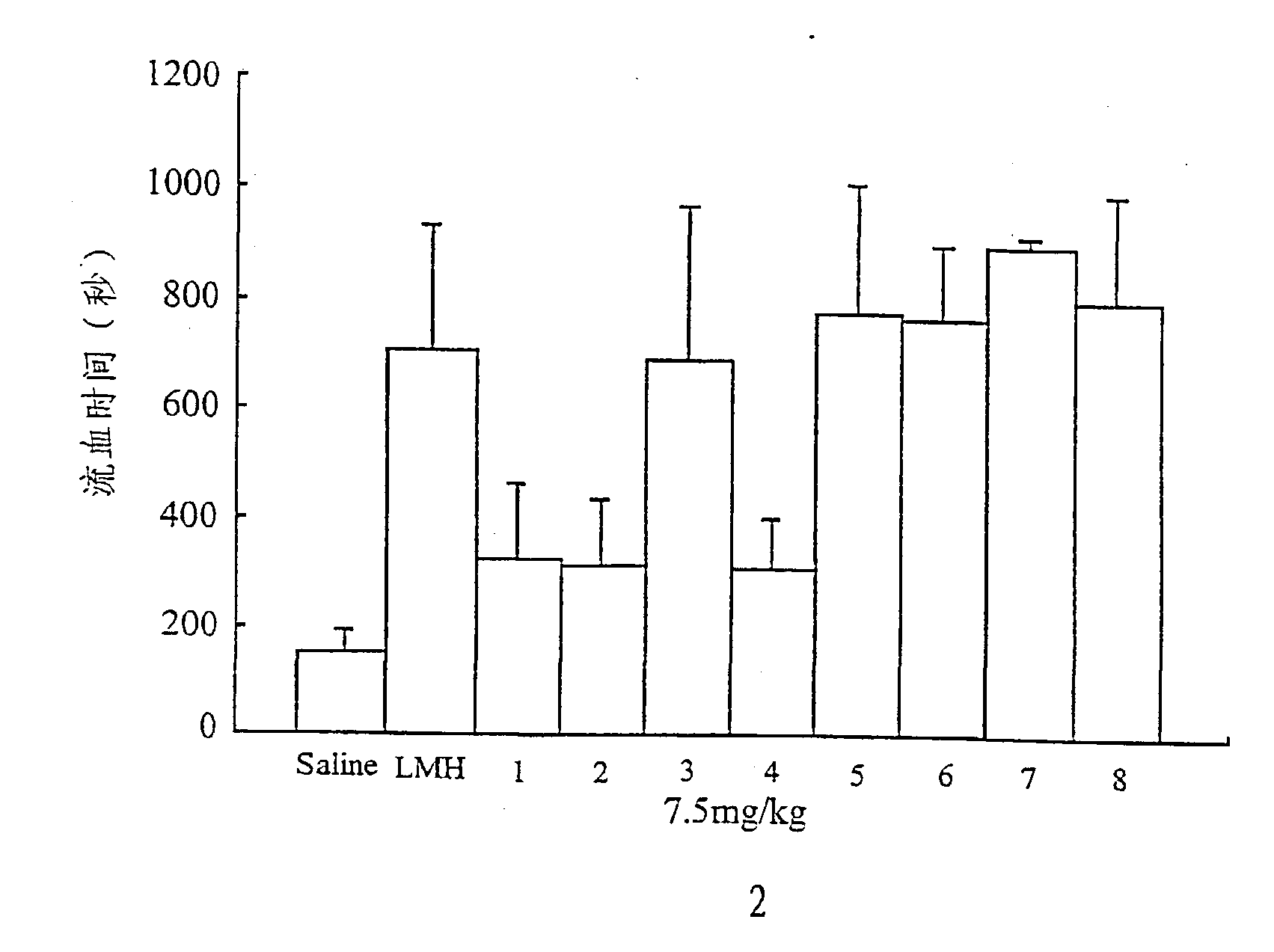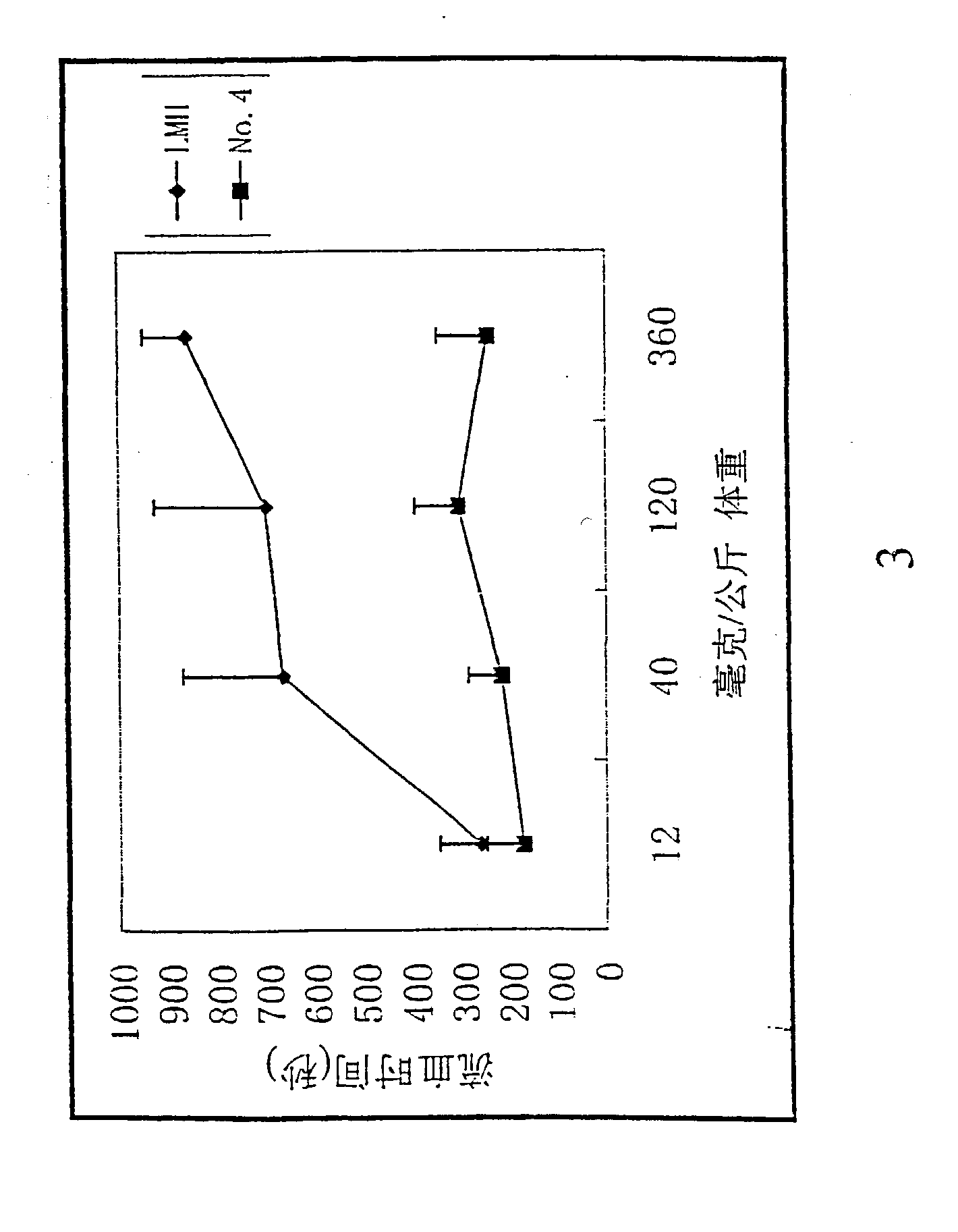Use of n-desulfated heparin for treating or preventing inflammations
a technology of ndesulfated heparin and inflammation, which is applied in the direction of drug compositions, extracellular fluid disorders, peptide/protein ingredients, etc., can solve the problems of limiting their extensive clinical use on inflammatory patients, and achieve the effects of preventing inflammation, maintaining blood pressure, and easing pain
- Summary
- Abstract
- Description
- Claims
- Application Information
AI Technical Summary
Benefits of technology
Problems solved by technology
Method used
Image
Examples
example 2
Measurements of Activated Partial Thromboplastin Time
[0111] Activated partial thromboplastin time (APTT) was measured using fresh human blood from healthy volunteers. The known amounts of heparin, Low molecular weight heparin and the chemically modified heparin derivatives were added prior to the determination of APTT using Silimat.TM. (bioMeieux sa) as activator. Six assays were performed for each compound and the anticoagulant activity was expressed as the concentration (ug / ml) that doubles the aPTT time (2-aPTT). The higher concentration is parallel to the lower anticoagulant activity (Table 1). The same assay was carried to determine the aPTT time of the mice in vivo (FIG. 4.).
example 3
Measurement of N-Sulfate Amounts
[0112] Solution and reagents: 5% sodium nitrite, 33% acetic acid, 3.8% trichloroacetic acid, barium chloride-gelatin reagent (prepared by dissolving 1 g of gelatin in 100 ml of water, incubated at 60.degree. C. to make a complete dissolution, then put it at 4.degree. C. overnight. The mixture was filtered after adding 0.5 g of barium chloride and was ready to use after standing for 4 hours at room temperature. This reagent was stored at 4.degree. C. and could be used for about one week.)
[0113] N-sulfates in heparin and various chemically modified heparin derivatives were determined by nitrous acid treatment as described [Inoue and Nagasawa, Anal. Biochem. 71, 46-52 (1976)]. Briefly, 0.5 ml of a sample solution was mixed with 0.5 ml of 5% sodium nitrite and 0.5 ml of 33% acetic acid. After shaking, the mixture was incubated at room temperature for 30 min and 4.5 ml of 3.8% trichloroacetic acid was then added. After shaking again, 1.5 ml of the barium c...
example 4
Anti-Inflammatory Heparin Screening Assay in vivo
[0115] Balb / c mice (males, 5 weeks old, 20.+-.1 g body weight) were purchased from Shanghai Animal Center of Chinese Academy of Sciences. Negative control group contained 8 mice, they were intraperitoneally injected with 1 ml of sterile pyrogen-free saline. Fifteen minutes later, mice were intravenously injected with 0.2 ml sterile pyrogen-free saline alone. The positive control group (12 mice) was intraperitoneally injected with 1 ml of 3% thioglycollate broth. Fifteen minutes later, mice were intravenously injected with 0.2 ml saline. The mice of the anti-inflammation group (7-11) were intraperitoneally injected with 1 ml of 3% thioglycollate broth. Fifteen minutes later, mice were intravenously injected with saline containing 1.5 mg of low molecular weight heparin or any of the chemically modified heparin derivatives. Mice were sacrificed at 2 hours. The peritoneal cavities were lavaged with 8 ml of ice-cold PBS containing 10 U / ml ...
PUM
| Property | Measurement | Unit |
|---|---|---|
| weight | aaaaa | aaaaa |
| molecular weight | aaaaa | aaaaa |
| physiological shear stress | aaaaa | aaaaa |
Abstract
Description
Claims
Application Information
 Login to View More
Login to View More - R&D
- Intellectual Property
- Life Sciences
- Materials
- Tech Scout
- Unparalleled Data Quality
- Higher Quality Content
- 60% Fewer Hallucinations
Browse by: Latest US Patents, China's latest patents, Technical Efficacy Thesaurus, Application Domain, Technology Topic, Popular Technical Reports.
© 2025 PatSnap. All rights reserved.Legal|Privacy policy|Modern Slavery Act Transparency Statement|Sitemap|About US| Contact US: help@patsnap.com



